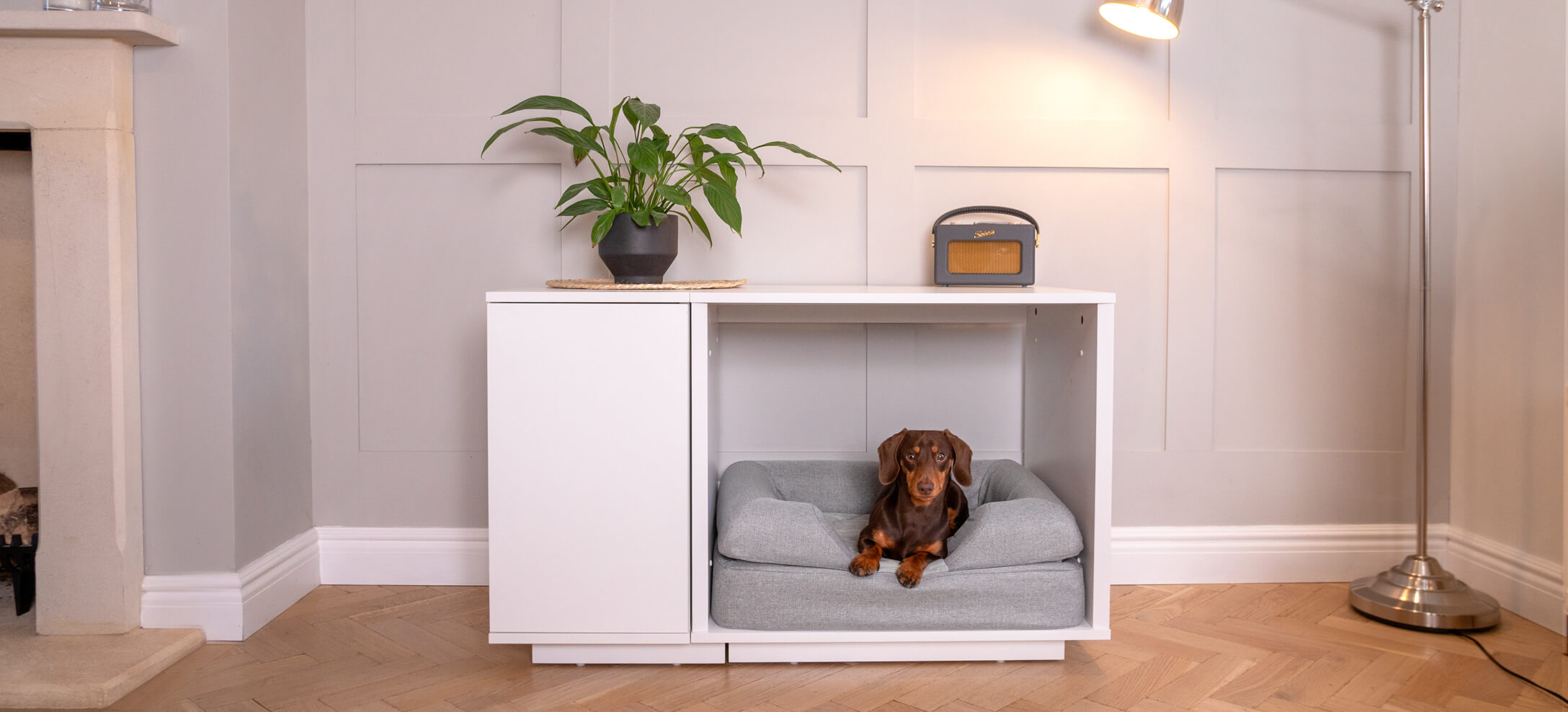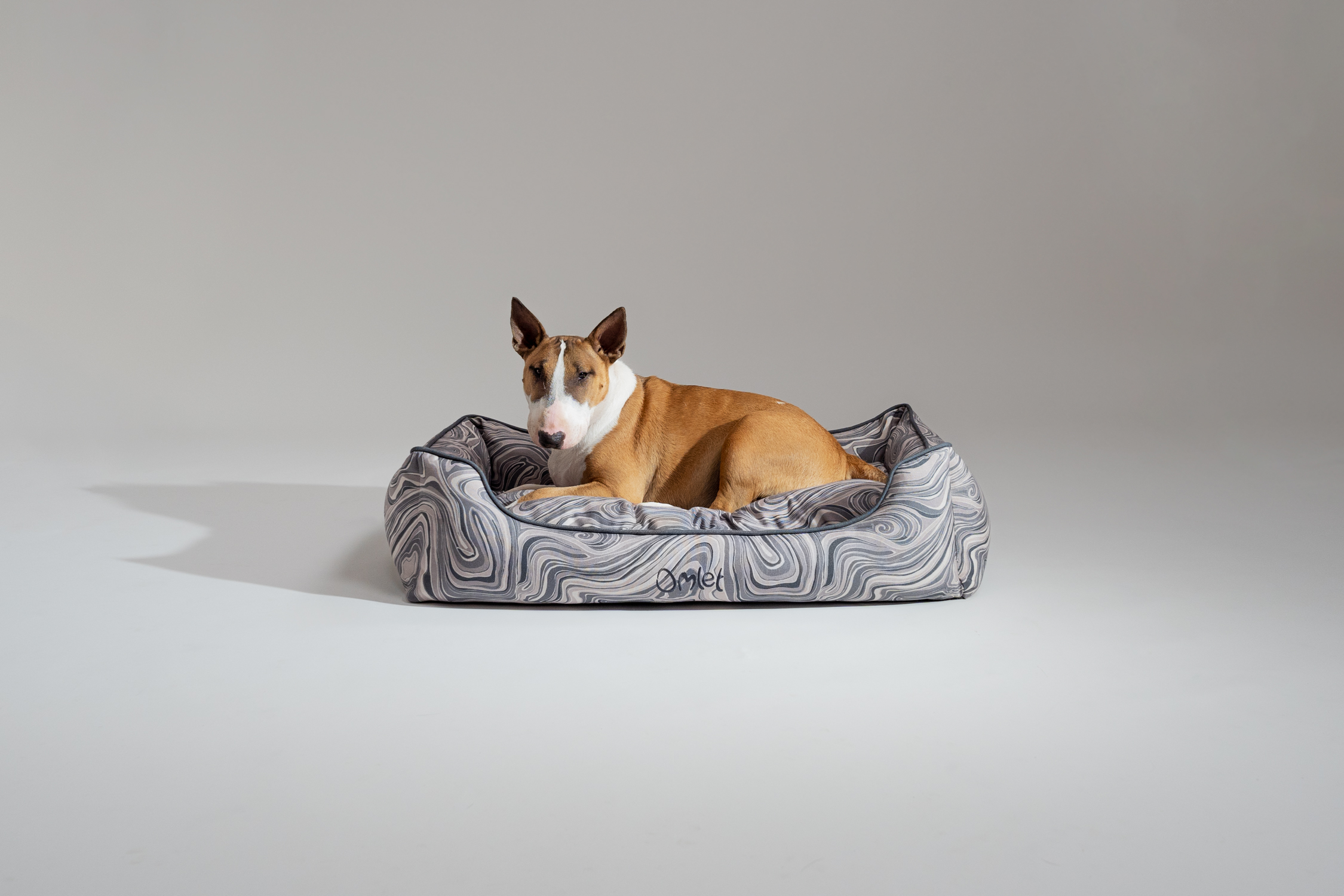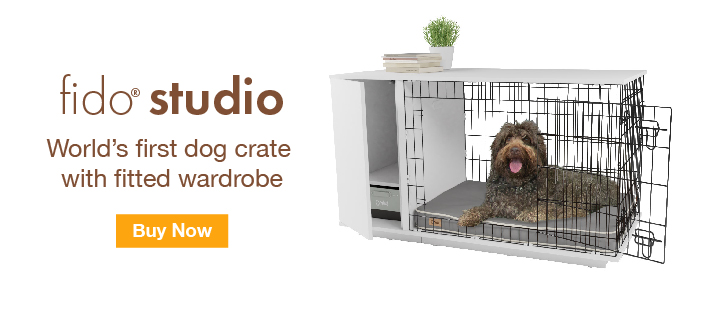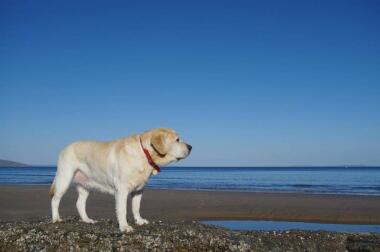Dogs have been our loyal companions for thousands of years, evolving from their wild ancestors into a wide array of breeds that span various roles and preferences. Over time, The Kennel Club have categorized these dog breeds into different groups based on their shared characteristics, purposes, and histories:

This dachshund is part of the hound group.
- Gundog
- Hound
- Pastoral
- Utility
- Toy
- Terrier
- Working
From hunting to herding, guardian to companionship, we have outlined the diverse traits and roles our beloved furry friends have played in human society. Let’s dive into the captivating world of dog breeds.
Gundog group
Known for their energy, agility, and keen senses, the gundog group of dogs consists of breeds that were originally developed for hunting purposes. Popular breeds included in this active group are Labrador retriever, golden retriever, and cocker spaniel, to name a few. If you’re lucky enough to call one of these breeds family, you know how well they excel in activities such as retrieving, swimming, and tracking. Not only are these exercise-friendly dogs great outdoor enthusiasts, they are ideal companions as well.
Hound (hunting) group
If an exceptional sense of smell was an Olympic sport, the hound, or hunting, dog group would be gold medalists. This diverse group of dogs are known for their unparalleled ability to track scents over long distances and their remarkable endurance to be of service in search and rescue operations. Breeds such as the foxhound, beagle, and basset hound all have an acute sense of smell, making them extremely useful in hunting or emergency rescue situations.But, a word of caution if you’re a first-time dog owner looking for the right breed - these dogs are also known for their tendencies to “bay” or “howl”, so consider carefully whether you’re able to cope with the enthusiasm of these stellar dogs.
Working group
The Working group includes breeds that have historically been used for various tasks like guarding, pulling sleds, and assisting in farm work. Both intelligent and strong, these dogs are highly trainable and extremely athletic. If one of these breeds is your favorite furry friend, then you have a working dog at your sidel: German shepherd, boxer, Great Dane, Saint Bernard. Often used as service dogs or police dogs, these breeds require lots of exercise and strict training. If a working dog is a member of your family, remember that like all dog breeds, they need lots of rest, so be sure you have a comfortable and supportive dog bed where they can relax after a hard day’s work.
Terrier group
Terriers are known for their spirited personalities and boundless energy. Originally bred to hunt and eliminate vermin, these small but feisty dogs possess strong determination and a fearless attitude. Breeds in this group include the Jack Russell terrier, Scottish terrier, and bull terrier. Considered to be fiercely loyal and intolerant of other dogs, the terrier group makes for excellent watchdogs and companions. But many in this group also possess longer hair or coats, so make sure you buff up on proper dog grooming techniques to keep them happy and healthy.
Toy group
If there is one dog breed that believes size doesn’t matter, it’s the toy group. Comprising dogs of tiny stature, the toy group was primarily bred for companionship due to their adorable appearances and charming personalities. Breeds such as the chihuahua, pomeranian, and toy poodle are all popular members of this group. Their diminutive size makes them well-suited for apartment living or for anyone who wants to carry a dog with one arm. But just because they’re small doesn’t mean they’re easier to train than a big dog. If you’ve ever heard a chihuahua bark, you know what we mean!
Pastoral group
Every dog breed has its own unique characteristics, but the one characteristic that best defines the pastoral group would be the controller. Bred to help humans manage the livestock, the pastoral dog breeds possess strong instincts to control the movement of animals, or family members, too! Breeds such as the Border collie, Australian shepherd, and Old English sheepdog all exhibit great intelligence and refined agility. It is these traits that help them excel in activities like obedience and agility competitions because they are quick to think on their paws and able to follow commands easily.
Utility/Non-sporting group
The utility group is a diverse category of miscellaneous dogs that includes breeds that don’t fit neatly into other groups. These dogs vary widely in size, coat type, and temperament and can play a range of roles with humans from companionship to performance. The bulldog, Dalmatian, and poodle are just a few examples of the non-sporting group breeds. While all of these dogs come from a wide range of backgrounds, their individual skills and traits are what make them such a lovable group.
Omlet and your dog breeds
The world of dog breed groups is a testament to the incredible diversity of human and dog companionship that has evolved through the centuries. At Omlet, we appreciate the unique characteristics and talents of all dogs, as we know that is what makes our connection with them so special. We design our products like the Topology dog bed and Fido Nook dog crate to support your dog - no matter their breed, size, or personality, and to enrich life together. Whether you’re drawn to the athleticism of the gundog group or the charm of the toy group, you’ll find the bed of both your dreams and the furniture to help you in the training process. So, the next time you encounter a dog, take a moment to appreciate the rich tapestry of traits that makes them who they are. You’ll quickly discover that the one trait all dogs share is a wonderful and unconditional capacity for love.







Comments
There are no comments just yet